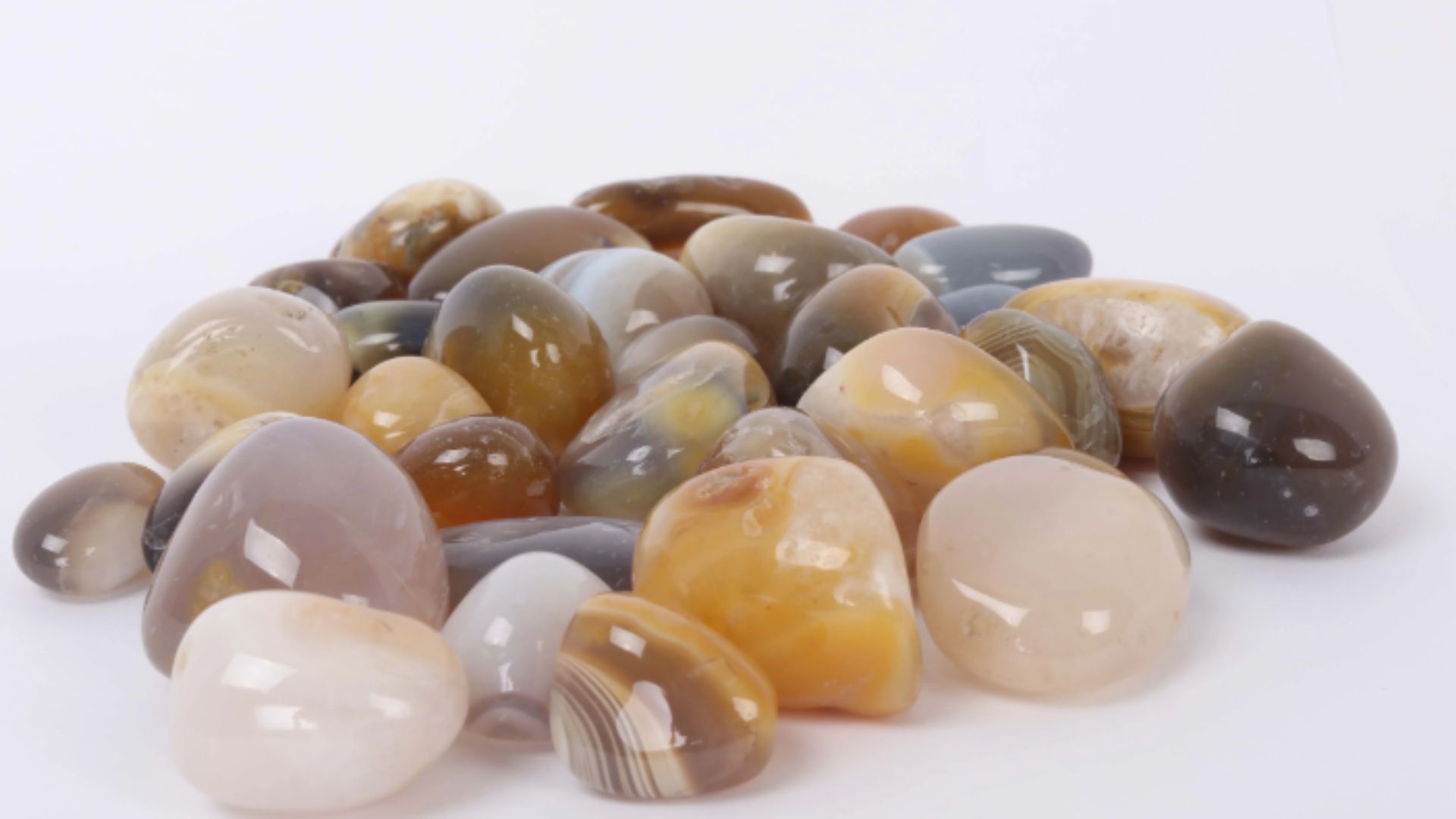Black agate, a captivating gemstone admired for its deep color and striking patterns, has adorned humanity for centuries. But how does this alluring stone travel from the depths of the Earth to become a treasured piece of jewelry or a decorative object? Today, we embark on a journey alongside black agate, exploring its remarkable path From Mine to Market.Let us get into the gemstone journey now!

Black Agate Mining Techniques
The first step in black agate’s journey begins deep within the Earth. Black agate forms in volcanic rock formations, and its extraction methods vary depending on the location and size of the deposits. In some regions, like Namibia, miners traditionally employed hand-digging techniques, meticulously extracting agate nodules from the surrounding rock. This labor-intensive process requires patience and skill to ensure minimal damage to the valuable gemstones.
However, advancements in technology have led to the introduction of modern mining methods in many locations. These methods often utilize machinery like backhoes and bulldozers to remove large quantities of rock, revealing the hidden agate deposits. While efficient, these methods require careful planning and execution to ensure the sustainability of the mining practices and minimize environmental impact.
Unveiling Black Agate’s Value
Once extracted from the earth, black agate embarks on the next stage of its journey – sorting and grading. At designated processing facilities, skilled workers meticulously sort the rough agate based on various factors, including:
Size
Black agate nodules come in various sizes, from small pebbles to large boulders. The size significantly impacts the final use of the gemstone, with larger stones being suitable for bigger carvings or centerpieces, while smaller ones are ideal for intricate jewelry pieces.
Color
Black agate exhibits a captivating range of colors, from deep inky black to charcoal grey with hints of brown. Additionally, some stones showcase contrasting white or grey bands, adding to their visual appeal. The color intensity and presence of patterns significantly impact the value of the gemstone.
Clarity
The presence of cracks, fractures, or inclusions within the agate can affect its value. Generally, black agate with minimal flaws and a high degree of clarity is considered more valuable.
Through this meticulous sorting and grading process, black agate is categorized based on its characteristics, ensuring it reaches the most suitable market segment, whether for high-end jewelry designers or crafters seeking unique decorative materials.
Cutting and Polishing
After sorting and grading, black agate undergoes a transformation process before it can truly shine. Skilled lapidaries take center stage, employing specialized cutting and polishing techniques to reveal the gemstone’s full potential.
Cutting
In the gemstone journey, lapidaries meticulously cut rough agate into slabs or smaller pieces using saws or diamond blades. They consider the size, shape, and presence of unique patterns within the stone to maximize its beauty and value while minimizing waste.
Polishing
Once cut, the black agate undergoes a rigorous polishing process. This process uses various polishing compounds and equipment to create a smooth, lustrous finish that accentuates the gemstone’s natural color and depth. The polishing technique varies depending on the desired outcome; some may aim for a high gloss finish, while others might prefer a more matte appearance.
Through this cutting and polishing process, the rough, unassuming gemstone journey transforms into a captivating gemstone, ready to captivate jewelry enthusiasts and collectors worldwide.
Black Agate in the Marketplace
With its newfound brilliance, black agate embarks on the final leg of its journey – reaching the market. The gemstone may travel various paths depending on its intended use:
Jewelry Manufacturing
High-quality black agate finds its way to jewelry manufacturers and designers. These skilled artisans craft exquisite pieces, incorporating black agate into rings, necklaces, bracelets, and earrings. The unique characteristics of each stone can inspire one-of-a-kind jewelry creations.
Wholesale Gemstone Markets
Black agate may also be sold in wholesale gemstone markets, where it’s purchased by smaller jewelry designers, bead makers, and craft enthusiasts. Additionally, these markets offer a wider variety of black agate qualities and prices, catering to different budgets and creative needs.
Carving and Decorative Objects
Black agate’s captivating patterns and durability make it ideal for carving and creating decorative objects. Also, skilled artisans may transform black agate into intricate sculptures, figurines, or even larger decorative pieces for homes and businesses.
Therefore, through these diverse market channels, gemstone journey finds its final destination, adorning individuals as stunning jewelry pieces or becoming beautiful decorative objects enjoyed for generations.
Conclusion
In conclusion, black agate’s journey, from its formation deep within the Earth to its transformation into a treasured object, is a fascinating story of human ingenuity and appreciation for natural beauty.

